Symbol of valor and honor
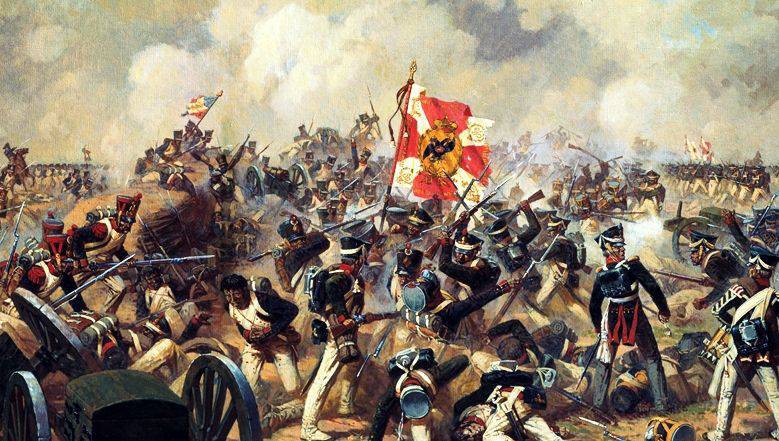
History combat banners goes into the distant past. In ancient times, in different countries, the banners were of the most diverse types and sizes - from a pile of hay on a pole to huge panels with precious embroidery. Among the Greeks and Romans, they were only a shaft, on top of which was attached a figure of an animal or bird (she-wolf, owl, eagle), while the Chinese and the people of India had a shaft with panels with a pattern or various symbols.
Over time, these military attributes change and improve, their role and importance increase. Practically all nations have battle flags that belong to certain military formations in the service of the state.
The Slavs of Ancient Russia called banners as banners. These were long, smooth poles, on the tops of which were fastened tufts of grass or horse manes - “bangs of towing”. Over time, they were replaced by a wedge of bright color visible from afar, which was fastened just below the top of the iron spear (guardian). Later, images of sacred figures and symbols appeared on panels: in pagan times, the most revered gods or monsters, and in the years of Christianity, crosses, faces of saints, and sayings from sacred writings. In Ancient Rus, banners were installed at the gathering places of warriors. This is mentioned in the ancient chronicles. In those days, the concept of “putting on a whip”, “cramming down a sling,” meant starting training squads for hostilities, building up, getting ready for a fight. Thus, in the well-known ancient Russian work “The Word about Igor's Campaign”, preparations are made for a campaign against the Polovtsian khans: “The pipes are trumpeting in Novgorod, they stand in Putyvl”.
The same work testifies that the banners obtained in battle were the most expensive part of the trophies. After the defeat of the Polovtsy in the first fight, gold and jewels were given to the warriors, and “Chrlen, hare, chorya, chrylka, silver shavings — to the brave Svyatoslavlich!”
Already in the XIII-XIV centuries. Banners in Russia were considered sacred, and the appointment of a number of "styagovshchikov" (denominators) - a high honor. The chroniclers write about the "great banners" (grand-ducal), located in a place of honor under the constant protection of the prince's retinue - the select army. At this time, the banners become indispensable combat attributes. In addition to the princely banners, there were also voivodships — the flags of the rati elements.
During the battle, the signals of the rati and the squadrons were sent out, and the fiercest battles took place near them. To defend the native in battle in Russia was considered valor, and to cut down the enemy - heroism.
Combat banners inspired warriors, gave confidence in forces, called forward to the enemy. 8 September 1380 during the Kulikov battle, when 150 thousands of soldiers of Dmitry Donskoy fought with the superior forces of Khan Mamai, the ambush regiment played the decisive role in the victory under the banners of experienced military leaders Prince Vladimir Bobrok. Here is how the chronicler tells about the regiment's strike from an ambush to the flank and rear of the enemy: “The like-minded friends left the green oak grove, as if they were trained falcons ... they hit the great Basurmanian force. And their flags are directed by a strong governor ... and they began to paginately cut down mercilessly. ”
By the beginning of the 16th century, the name “banner” gradually disappeared from use and the word “banner” firmly entered into its place in the military lexicon. With the establishment of autocracy, the production of banners was somewhat streamlined, and military units with the right to speak with them were defined. However, strict rules in their manufacture (size, quality and color of the fabric, drawings, inscriptions, etc.) did not exist.
With the formation of the Streletsky regiments, the banners acquire not only military, but also national importance. If earlier “the construction of banners by the zeal of the governor was allowed”, now they “complained about the king”. Each Strelets Regiment was given a large banner, called the king, or team. Hundreds of regiments had smaller banners. They were all rectangular in shape. For the archers and the Cossacks who served on the outskirts of the state, the banners were made with a cut-off lower corner. Small banners for equestrian units and Cossacks, called prapor, were often made with one or two braids.
The role and importance of banner banners raised even more by Peter I. Under him, they become a real symbol of the military honor, valor and glory of regular troops. Banners have become widely used to educate soldiers in stamina, offensive spirit, love for the “Russian fatherland”. With banners unfurled in a solemn atmosphere, the warriors took the oath. In the Russian army, this rule was introduced for the first time and marked the beginning of one of the most important military traditions. Peter's soldiers gave an oath in which such words sounded: “From the company and the banner, where appropriate, although never in the field, the wagon train or the garrison, never leave, but behind it is still alive, certainly voluntarily and truly, since I enjoy my honor and my belly, I will follow. "
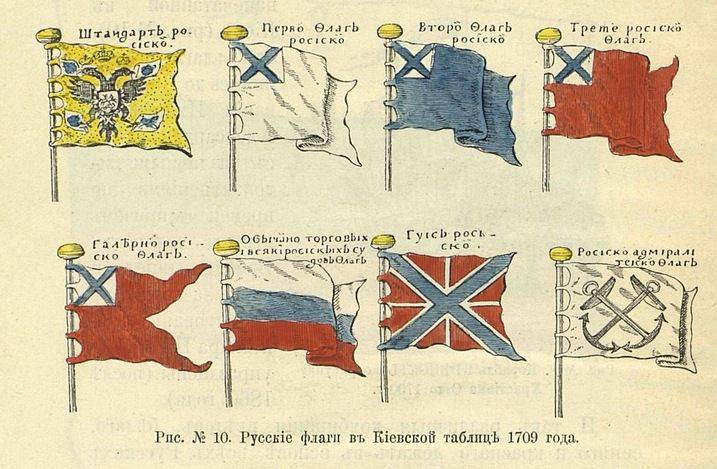
In the educational work carried out by the troops, the king’s admonition is of the utmost importance: “Whoever swore to the flag once - he should stand next to death”. This instruction was reflected in the “Military Regulations”, which was developed with the personal participation of Peter I. The loss of the military shrine was henceforth becoming the greatest crime and indelible shame. The regiment, which lost its banner in battle, disbanded, soldiers and officers were denied the right to wear military ranks, and the guilty were severely punished.
Standard-bearers (ensigns and sub-ensigns) were appointed from the best war-tested soldiers and took another special oath. They were instructed to go in front of their mouths with banners or ensigns deployed in battle, not to allow them to fall, and when "a dangerous event in the retreat (or tap) happens, then the banner should be torn off the flagpole and bury it in oneself and thus save oneself."
Peter I established a uniform banner for the troops, determined its coloring and design. And although there was no specific legal provision for these military symbols, it was a rule to make banners: regimental - white in 3,5 size on 4,5 arshin, and company ones - from colored fabric in 3 size on 3 arshin and 6 vertices. On the panels were placed various allegorical drawings. A characteristic image for the company banners of the soldiers' regiments was a hand coming out of the clouds, squeezing a sword or broadsword, framed by branches of laurel - a symbol of victory over "unholy adversaries".
The new flags lost the strictly religious significance that they had during the pre-Petrine period. They did not have long sayings from the scriptures, and if inscriptions were placed, they were short and inspiring confidence in victory. Thus, on the panels of the first Guards regiments - Semenovsky and Preobrazhensky - an expressive slogan was embroidered: "With this banner of victory!"
For the naval fleet a single flag was set - white with blue, from corner to corner, stripes (St. Andrew's flag). Peter I considered the flag hoisted on a warship to be the banner of the ship and demanded that he not be lowered before the enemy under any circumstances.
With the flags of the new model, the Peter army won many brilliant victories, including completely defeating the Swedish troops in 1709, near Poltava, which were considered invincible and the best in the world. Russian warriors fought heroically against the Swedes and captured 264 of enemy banners and standards. After the Battle of Poltava, the battle flags of the regular Russian army gained European glory.
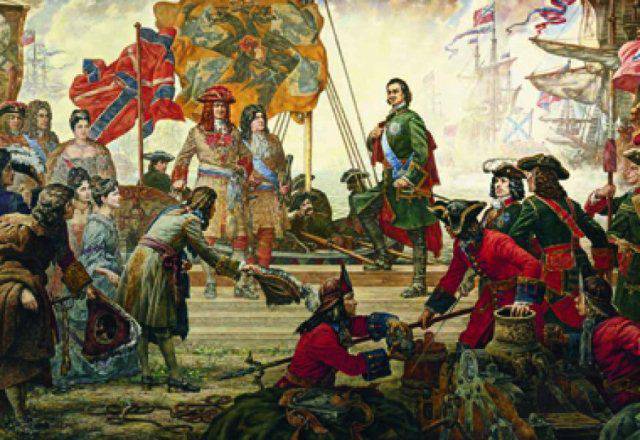
Highly held the honor of the ship's flag and the Russian sailors. They achieved outstanding victories in the sea battles at Gangute (1714), near the island of Esel (1719) and Grengam reach (1720). The young Russian fleet has become one of the strongest in Europe.
Under the successors of Peter I, the sizes of the banners, the inscriptions on them, the shape of the banner and the color of the shaft changed several times. Each royal heir, ascending the throne, considered it necessary to make additions and amendments to the design of banners. In 1731, the name Standard was finally established for the cavalry units' banners, and a little later the coat of arms of the cities where these formations were created or were constantly placed on the banners of the banners of the infantry regiments. And although the appearance of the banners often changed, the shape and white color of the regimental banners and company ensigns of colored fabrics were largely preserved.
The attitude of the Russian warriors to the military flags as symbols of military honor and valor, their striving to increase the glory of the Fatherland, the glory of the battle flag, remained unchanged.
In the history of the Russian state Russian soldiers inscribed a lot of bright victories that surprised the world. 11 December 1790, they stormed, seizing Ishmael, who was considered an impregnable fortress. A. Suvorov, after his victory, went down on his knee and kissed the edge of the battle flag under the enthusiastic cries of his army. Suvorov miracle warriors carried the banners across Europe, overcoming in unprecedentedly short time alpine gorges and impassable mountain passes. Under the command of the great commander, they did not suffer a single defeat and during the battle campaigns captured more than 600 banners and standards of the enemy.
Glory were covered Russian battle banners and in World War 1812 year. In the course of the Battle of Borodino, regimental banners and ensigns inspired the soldiers, instilled confidence in victory, and helped steadfastly hold the lines.
26 August at Bagration flushes a particularly stubborn and bloody battle ensued. Several times these fortifications passed from hand to hand, the French “brought in a new, fresh force” and began to press down on our Revel regiment. Seeing this, the commander of the brigade, Major General Alexander Alekseevich Tuchkov, rushed into the thick of the bout, took the standard-bearer from the standard-bearer and carried the regiment along with him. The situation was corrected, the regiment broke the French, but the brave general blew through the bullet was killed with a banner in his hands. The Russian people immortalized his name on a monument, a monument erected on the Borodino field.
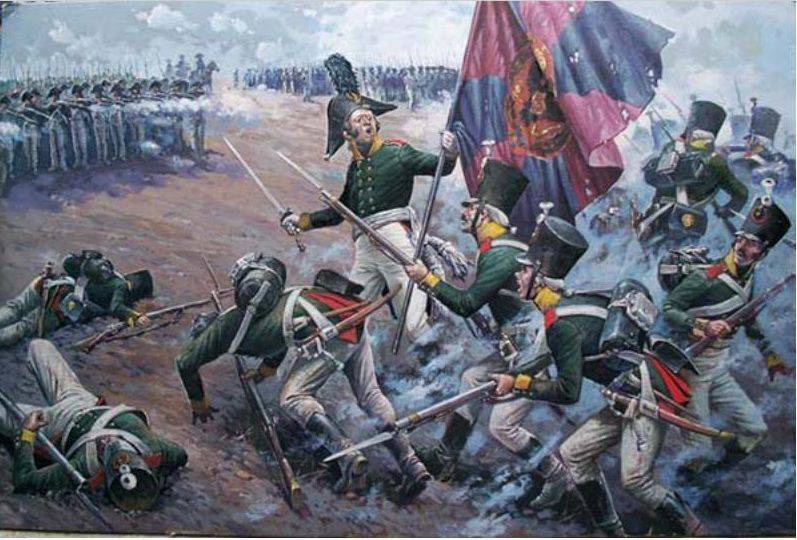
Selfless allegiance to their flag showed Russian sailors. Here is one example. 26 May 1829, the Black Sea brig "Mercury" under the command of Lieutenant Commander A.I. Kazan met with the Turkish squadron and was forced to take an unequal battle with the two battleships that had caught up with him. The enemy had a tenfold superiority in artillery. Before the battle, the officers of the Russian ship on the council decided to blow up the ship, but not to lower the flag of St. Andrew in front of the Turks. Four hours was a bitter battle. Skillfully maneuvering, the Russian sailors responded to the enemy's volleys with accurate fire. They managed to sabotage the sails on both enemy ships and force the Turks to abandon their pursuit. In that battle, “Mercury” received more 300 holes and damage, but the sailors eliminated most of them, and the very next day the heroic brig joined the Russian fleet.
Realizing the power of the banners on the battlefield, their influence on the morale of the soldiers, the flagmen showed heroism in carrying out their honorable duties. They marched in the front ranks of the advancing units, knowing that the enemy first of all seeks to concentrate fire on the commanders and on them. However, even when injured, the denominators did not remove the shaft from their hands and did not leave the battlefield. That is exactly what 23 of October 1853 of the year did during the Oltenitsky battle non-commissioned officer of the 2 th grenadier company of the Selenga Infantry Regiment Andrei Snozik, the denominator of the 2 battalion. He was wounded and contused by a Turkish grenade and dropped to his knee. His assistants were killed. The brother-soldier wanted to take the banner, but Snozik gathered his strength, got up and said firmly: "While I live, I will not give anyone the banner." Grabbing the wound with his hand, he went forward again towards the enemy.
During the war with the Turks in the defense of Eski Zagry (Stara Zagora) at the end of July 1877, Russian and Bulgarian militia under the command of Lieutenant Colonel Pavel Petrovich Kalitin accomplished a collective feat. The war banner of the squad was served by the inhabitants of the Volga city of Samara and presented it to the Bulgarian militia. During the bayonet counterattack, the standard-bearer, non-commissioned officer Anton Marchin was killed, and the banner fell to the ground with him. Assistant Bulang caught him, but was immediately killed. Banner raised non-commissioned officer Avksentiy Tsimbalyuk, who was soon seriously wounded in the stomach. Lieutenant Colonel Kalitin, noticing this, instantly jumped off the horse, grabbed the shaft and, leaping into the saddle, carried it forward in front of the front of his squad. The Bulgarians shouted “Hurray!” And, inspired by Kalitin’s courage, boldly rushed at the enemy. The Turks backed away under the powerful onslaught of the warriors. But at this time the lieutenant colonel began to fall from a horse, hit by bullets. He was caught in his arms, and a non-commissioned officer rushed forward with the banner, but a Turkish bullet hit him. A few more warriors died in this battle, walking with a banner. Shot through, with a broken shaft, stained with the blood of Russians and Bulgarians, it was rendered by non-commissioned officer Thomas Timofeev and handed over to the militia Nikola Korcheva. Subsequently, the Bulgarian people as a precious relic kept the Samara banner in the Museum of the People's Army in Sofia.
One of the most glorious martial traditions that has been preserved at all times is the selfless defense of the banner in battle and the rescue of cloth at any cost. The soldier’s memo, published in 1859, said: “An honest, brave soldier will die in his hands with a banner, and will not allow the enemy to be shamed”.
True to their military duty, the Russian soldiers showed unprecedented courage and did everything in their power to save the battle flag, and with it the honor of the regiment. 8 September 1854, the commander of the 2 th battalion of the Minsk regiment, Colonel I.I. Rakovich in battle on the Alma River, personally saved the battle flag. On the Inkerman Heights 24 of October 1854, the Okhotsk regiment died in battle for the battery, and the military flag fell to the British. The non-commissioned officers Barabashev and Ignatiev, breaking through into the very thick of the enemy, tore the sacred object out of the hands of the enemy and saved him.
In the battle of Mukden, in the winter of 1905, a part of the 162 Infantry Regiment of the Akhaltsykh Regiment was surrounded by the Japanese. The battle flag was in the joint company, under the command of Captain Zhirnov. When breaking out of the encirclement, he understood the danger of the situation and gave the order to the flag holder Grishanov to remove the cloth from the pole and hide it, and, distracting the enemy, with a raised pole, he rushed in the opposite direction and was killed in a shootout. Grishanov managed to hide the cloth on his chest under his overcoat during hand-to-hand combat, and after being captured, he was able to save it and transfer to lieutenant Hondazhevsky. For eight and a half months, the lieutenant hid the banner, sewed it in a blanket, and then under the lining of his coat. Returning to his homeland, Khondazhevsky handed over the banner to the War Department. So the honor of the regiment was saved. For this feat, Grishanov and Khondazhevsky are listed in the 162 Infantry Regiment of the Akhaltsykh Regiment, and Captain Zhirnov was awarded the Order of St. George the Victorious of the 4 degree and is also listed in units.
There are a lot of examples where Russian soldiers and sailors showed samples of military duty. Loyalty to the flag of battle, selfless defense of him in battles were characteristic of most soldiers and officers. A glorious tradition - loyalty to the flag of battle, the readiness to defend it was inherited and even increased after the revolution in the Red Army and in the Soviet Army. The red flag during the war years was defended not only by fighters, but also by ordinary civilians, including children. More than ever, this military attribute gained its strength and holiness. A huge number of exploits under the banner of war was committed in that period. But the story about this deserves a separate article.
Sources:
Reichardt G., Shurdel G. Banners and standards of the Russian Imperial Army of the late XIX - early XX centuries. M .: AST. 2002, C. 3-5, 18-19.
Shevyakov T. The loss of banners and standards of the Russian Imperial Army in 1799 — 1917. Internet edition. 2004. C. 1-2, 15-16.
Znamierovsky A. Flags. World Encyclopedia. M .: EKSMO, 2009. C. 8-12.
Rybkina V. Solonitsyn G. Combat traditions // VIZH. 1979. No.9. C. 107-111.
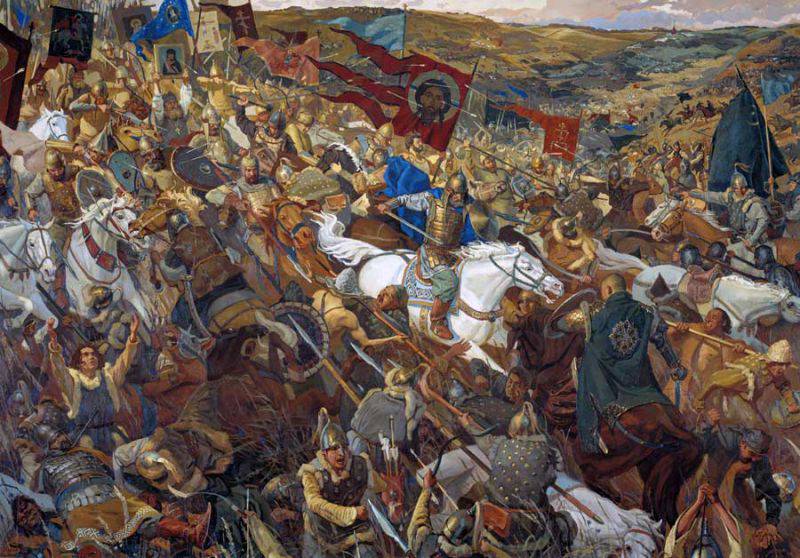
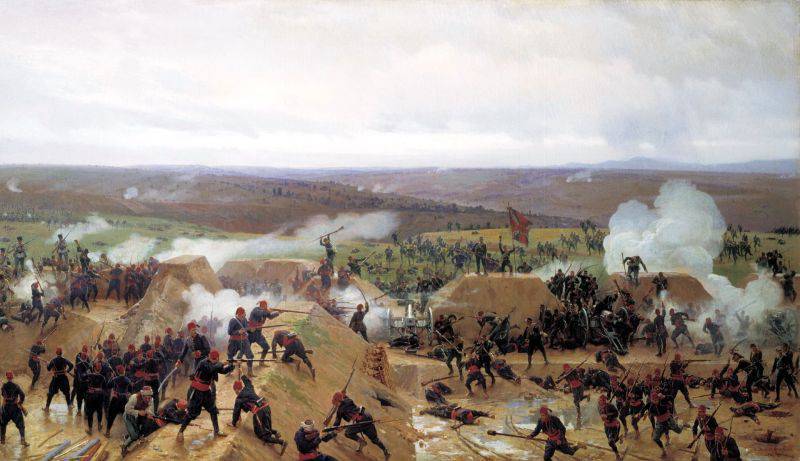
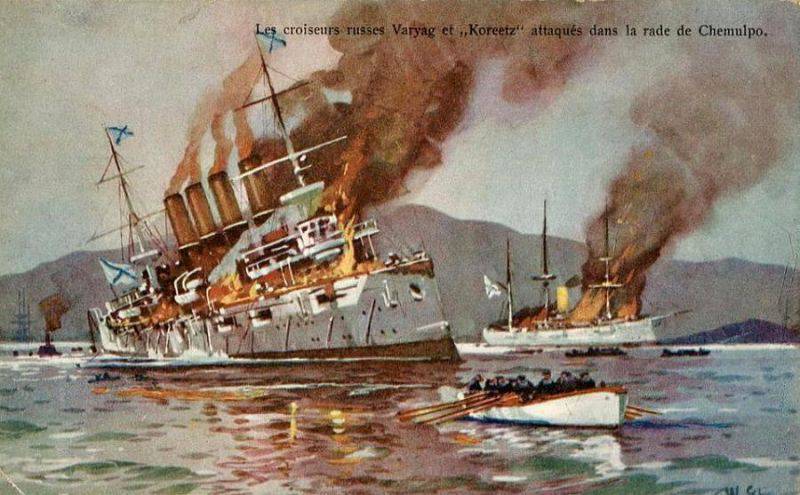
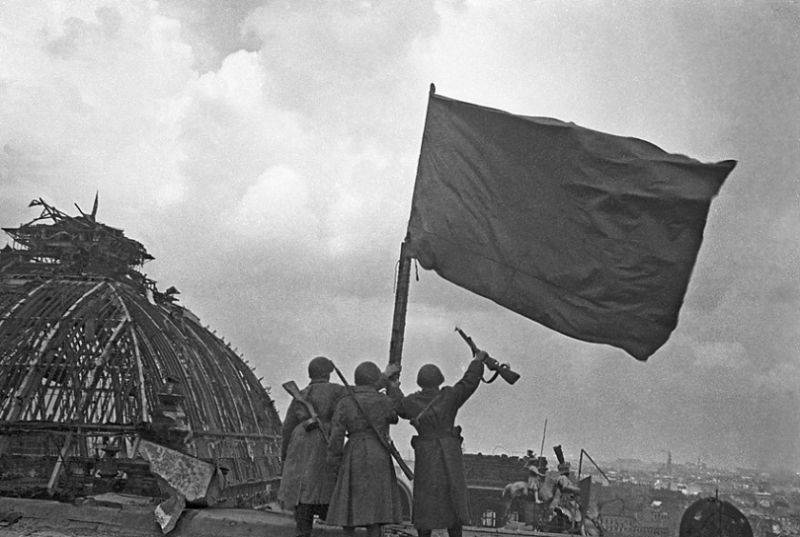
Information